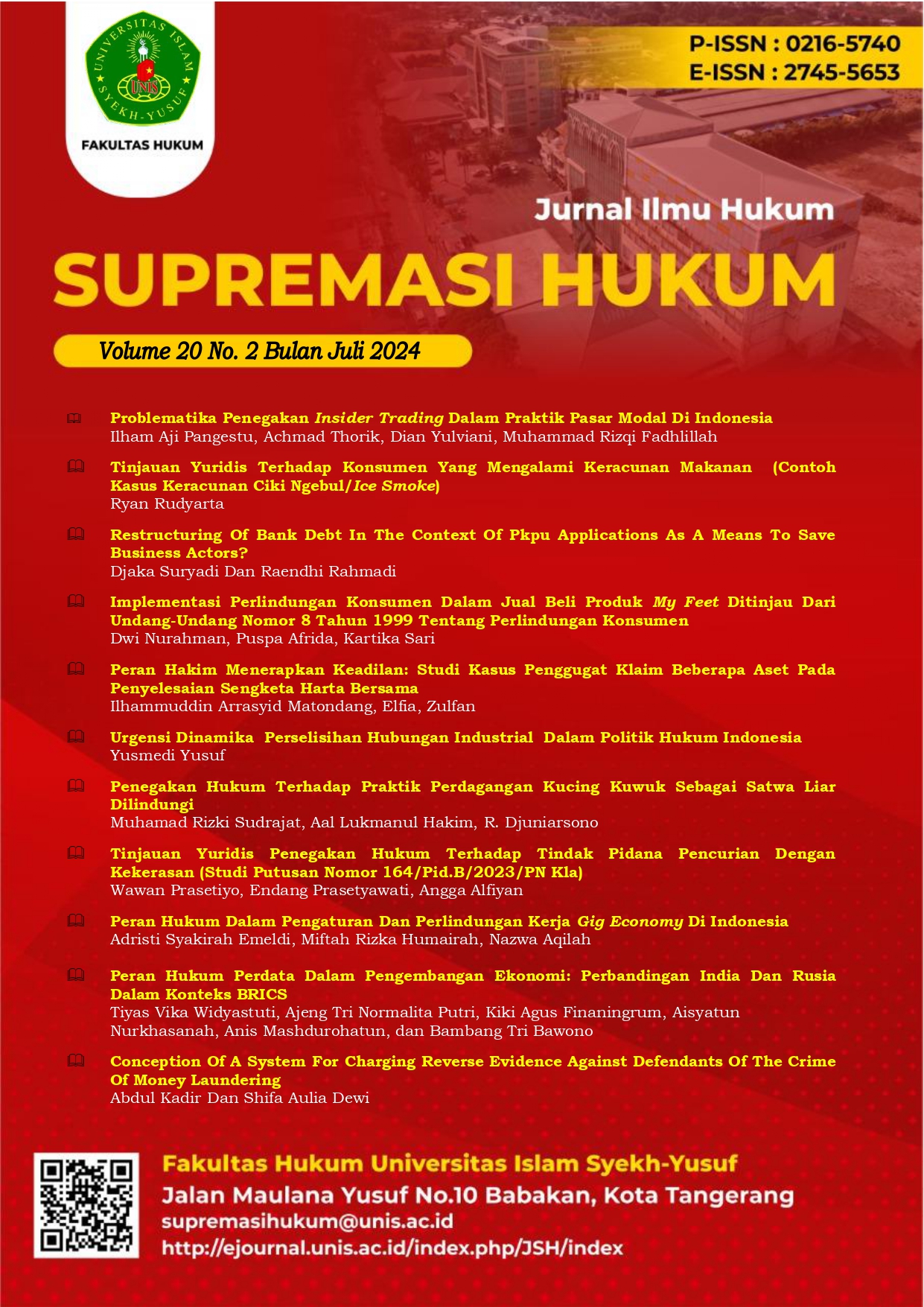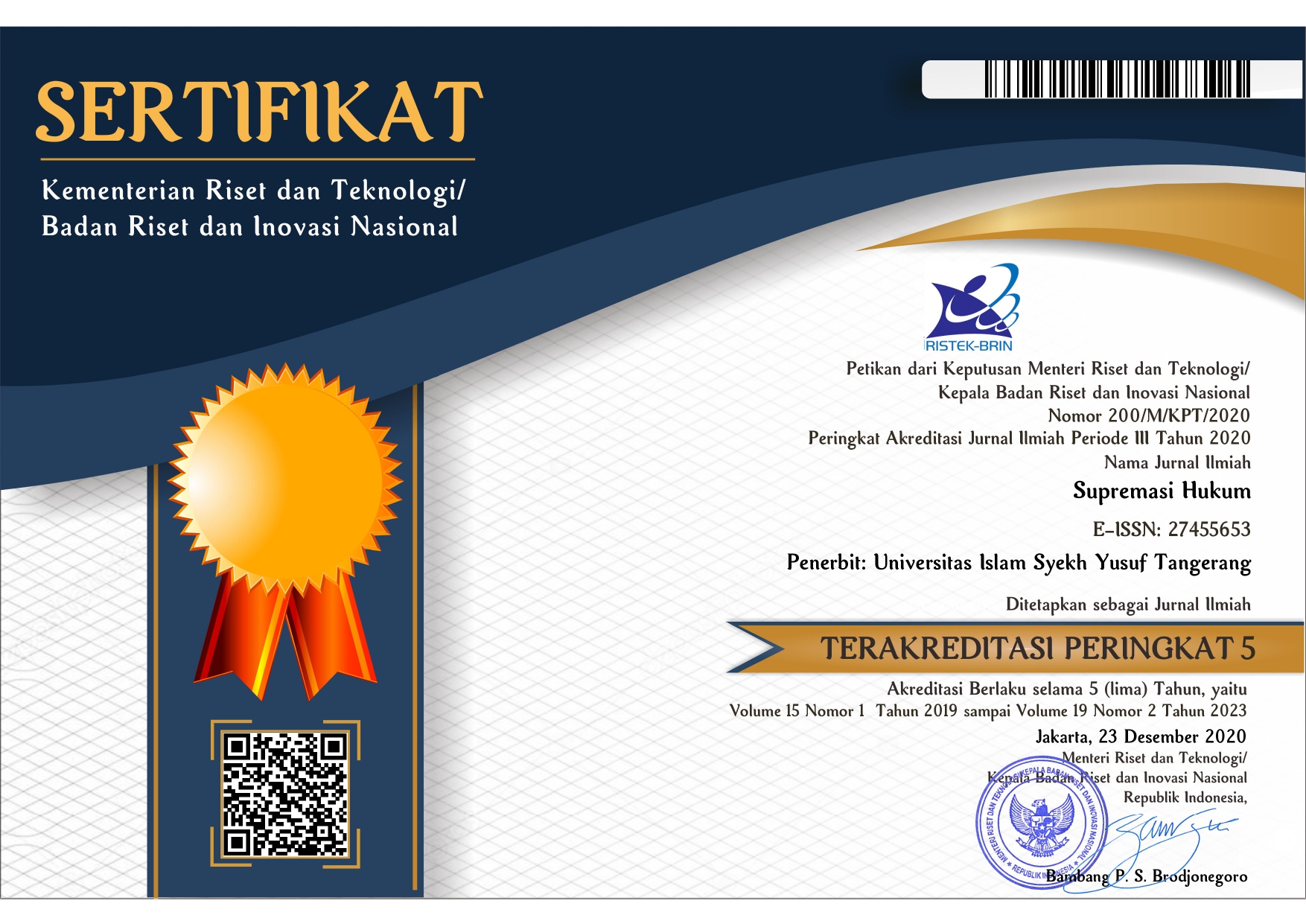CONCEPTION OF A SYSTEM FOR CHARGING REVERSE EVIDENCE AGAINST DEFENDANTS OF THE CRIME OF MONEY LAUNDERING
Abstract
This research is motivated by the difficulty of the evidentiary process in the crime of money laundering with the formulation of the problem including how to conceptualize the reverse burden of proof system for defendants in money laundering crimes and what are the obstacles to implementing the reverse burden of proof in money laundering acts. The research method used in this research is a type of normative research which refers to legal norms in statutory regulations relating to balanced and limited reverse evidence. The data collection technique uses the documentation method with the source of the data obtained coming from secondary data. The results of this research show that reverse proof is applied to the defendant's assets for both active and passive money laundering crimes by proving that the assets were obtained legally, but the concept is regulated in Articles 77 and 78 of Law Number 8 of 2010 concerning Prevention and Eradication. The crime of money laundering is not explained clearly, causing obstacles in its implementation. Obstacles in implementing reverse evidence are found in terms of substance, structure and legal culture in law enforcement.
Keywords: Reverse Evidence, Criminal Offences, Money Laundering
Downloads
Published
Issue
Section
License
Copyright (c) 2025 SUPREMASI HUKUM

This work is licensed under a Creative Commons Attribution-NonCommercial-ShareAlike 4.0 International License.

Supremasi Hukum this site and metadata is licensed under a Creative Commons Attribution-NonCommercial-ShareAlike 4.0 International License



